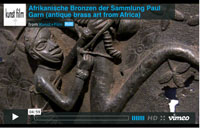| 27 Bronzes from the Paul Garn Collection |
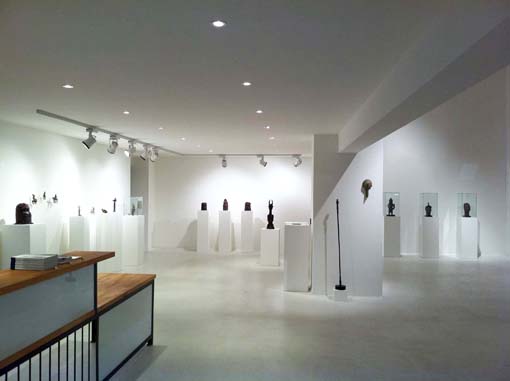 |
It was Peter Hermann who first performed a dating of Cameroonian bronzes in the 1990s. Back then, the entire global literature on Cameroon contained no age specifications. Today, it’s widely accepted that bronze casting arrived in the Grasfields some 300 hundred years ago in the course of a mass migration, a fact from which important art historical conclusions have been drawn. The bronze culture of southern Nigeria is even more complex because it extends back at least to the seventh century. Here, too, the gallery established standards. Unusually for a gallery, we financed art historical research that took Nigerian viewpoints into account and found a way to communicate our findings that had broad public appeal. Encouraged by countless correspondences with scholars and collectors, we began to date pieces as older than they were being dated elsewhere in Europe and North America. Today, in 2011, the African theses espoused by Peter Hermann have been widely accepted. By means of an exportation for exhibition in the United States and a re-importation to Germany, we helped establish legal security for the trade. We devoted our energies to Nigerian reclamation and were, to that end, in close contact with Nigerian scholars. After years of addressing these and similar issues, we are now considered one of the preeminent galleries with a focus on art history and a commitment to in-depth examination of African art. We’ve also focused our energies, if slightly less exhaustively, on Mali, whose wooden sculptures, architecture and terracotta excavations are better known to the public than the bronzes. Our collection spans the region with a mixed selection of pieces, including a well-known group of small riders. A 300-year-old casket lid, designed like the miniature of a granary door, is an enigma. |
The bronzes of the Paul Garn collection were traded in Europe in the early 20th century, well before the conflict over copies and originals of imported objects darkened the mood of collectors and researches. Paul Garn was a vintner who travelled widely throughout France in the 1920s and, from what his descendants know, bought many items in the southern part of the country. If our last exhibitions were marked by bold theories and the presentation of contested pieces that left much room for controversy, then this exhibition boasts a certain measure of calm. In order to enjoy that calm, we’re showing and publishing exclusively those works from the former Garn Collection. The pieces speak for themselves – for a century-old collecting tradition, for the long history of sub-Saharan Africa and its most impressive cultural output. |
Paul Garn Collection Auction Results Tagesspiegel - 21.1.2012
|
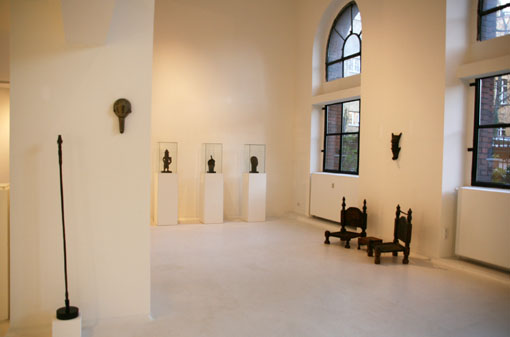 |
Will be translated Haben Sie schon das Durchgeknallteste gehört, was uns die Ethnologen seit der Negierung des Kunstbegriffs zu bieten haben? Allen voran die eifrige Wiener Doktorin die doch tatsächlich der Meinung ist, wir hätten die Objekte aus der Sammlung Garn mit einer Strahlenkanone bearbeitet um sie noch ein bißchen älter zu machen als sie ohnehin schon waren. Zur Erinnerung verschiedene Artikel die diese Inhalte schon bearbeiten: Artikel, 2006 Von Fälschung und Vision veröffentlicht in der Afrika-Post Hier ein Auszug der Referenzen des Labors Ralf Kotalla. Hier ein Auszug der Referenzen der Galerie Peter Herrmann. Eine Bitte an alle Leser: Sollten Sie irgendwoher eine plausible Erklärung kennen, auch wenn sie nur andeutungsweise erklärt wie eine "ionisierende Bestrahlung" relevant funktionieren soll, wären ich und viele andere Sammler, Händler und Auktionatoren weltweit dankbar. Frau Plankensteiner hat unseres Wissens noch nie und nirgendwo eine Veröffentlichung oder eine wissenschaftliche Erklärung ihrer "Strahlenkanone". Sie rennt obsessiv in Kamerun und Nigeria herum und fotografiert Werkstätten die Repliken alten Bronzen herstellen die sie dann diskriminierend und beleidigend "Fälscherwerkstätten" nennt oder zumindest diesen Begriff impliziert. Oder kennen Sie sonst irgend etwas relevant Geschriebenes von ihr das wir nicht kennen? Gibt es noch einen Ethnologen oder eine Ethnologin, die den erhabenen Quatsch einer Strahlenkanone vertritt? ( außer weiland Forkl ) Hinweise über das Röntgengerät eines Facharztes sind von der Bitte ausgenommen. Wir meinen ein Gerät mit Schalter, wo man 300 Jahre, 310 Jahre, 320 Jahre, 350 Jahre usw einstellen kann, damit alles schön stilistisch passt. Wir gehen jedem Hinweis nach - Schon im Voraus herzlichen Dank. |
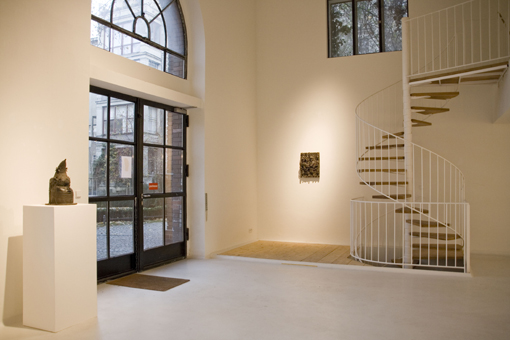 |
| "Original-Copy-Fake", pp 171, von Dr. Peter Junge: |
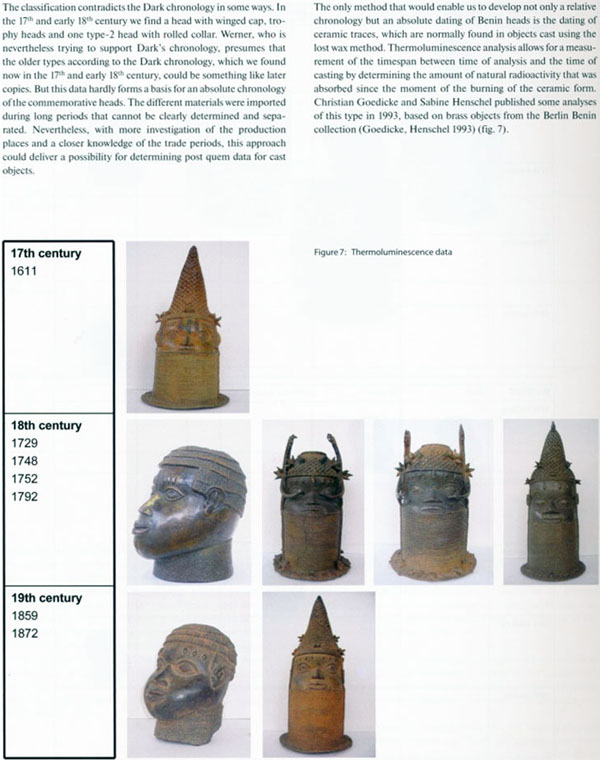 |
| Links
|
| Wachsausschmelzverfahren | Afrikanischer Gelbguss - Bei Wikipedia | |
| Ife | Benin | - Bei Wikipedia | |
| Question?? Answer!!! What about airport X-Rays and Radiography ? - Kotalla |
| Ausstellungen
der Galerie
|
| 200 Jahre Metallarbeiten aus Afrika. Stuttgart 2000 | |
| 200 Jahre Metallarbeiten aus Afrika. Berlin 2001 | |
| Bronzen aus Ife und Benin. Berlin 2007 | |
| 1000 Jahre Benin-Bronzen. Berlin 2008 | |
| Africa - Traditional Benin Bronzes. Miami 2009 |
| Exhibitions 2011 | Ausstellungen 2011 |

